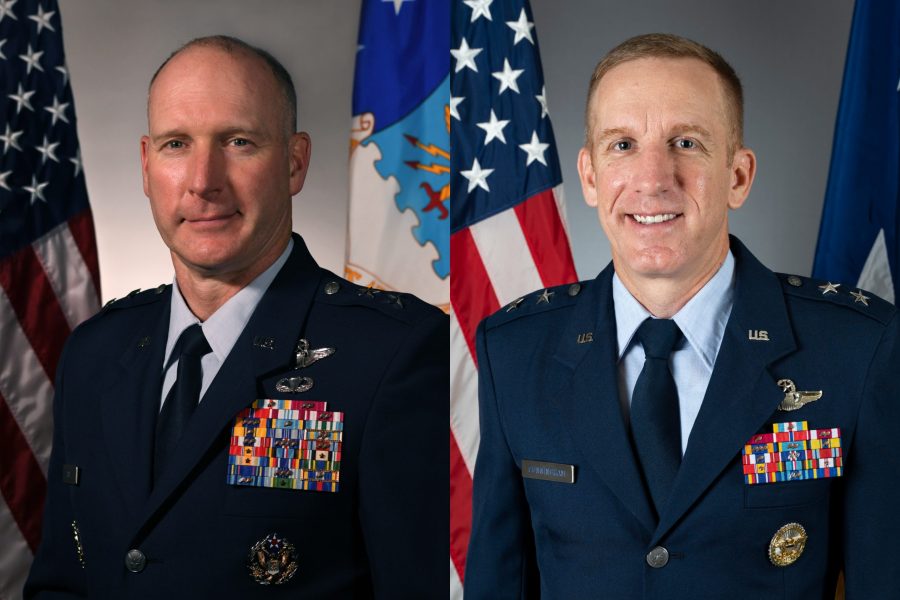U.S. forces in Japan and Alaska are slated to get new leaders, as the Pentagon announced March 25 that President Joe Biden has nominated two Air Force major generals for their third stars and new assignments.
Maj. Gen. Stephen F. Jost has been tapped to take command of U.S. Forces Japan and the 5th Air Force, while Maj. Gen. Case A. Cunningham has been selected to lead Alaskan Command and the 11th Air Force.
If confirmed, both Airmen will be tasked with leading subordinate commands—U.S. Forces Japan is under U.S. Indo-Pacific Command, while Alaskan Command is under U.S. Northern Command. Both the 5th and 11th Air Forces are under Pacific Air Forces.
Jost currently serves as commander of a different subordinate command, Joint Enabling Capabilities Command under U.S. Transportation Command. An F-16 and F-35 pilot, he has commanded at the squadron, group, and wing levels, and has spent most of the last five years in joint assignments. Prior to that, he spent almost two years in the Air Force’s F-35 Integration Office, including time as its director.
As head of USFJ and the 5th Air Force, Jost would succeed Lt. Gen. Ricky N. Rupp in overseeing some 54,000 military personnel.
If confirmed, Jost will take charge as profound changes in U.S.-Japan military cooperation look set to take place. Multiple media outlets, including the Financial Times and Reuters, reported this weekend that the two countries’ leaders—President Joe Biden and Prime Minister Fumio Kishida—plan to announce a major restructuring of the U.S. military command in Japan in April. The goal will be to tighten operational planning and exercises between the two nations to combat China’s growing power.
The Space Force is also expected to activate its component command within U.S. Forces Japan in 2024.
Cunningham, meanwhile, is poised to take on a triple-hatted assignment as head of Alaskan Command, the 11th Air Force, and the Alaskan North American Aerospace Defense Region. He would succeed Lt. Gen. David S. Nahom, who has held the job since August 2022.
Cunningham currently serves as commander of the U.S. Air Force Warfare Center, overseeing the 57th Wing, 53rd Wing, 99th Air Base Wing, 505th Command and Control Wing, 350th Spectrum Warfare Wing, the Nevada Test and Training Range, and the Air Force Joint Test Program Office. A former commander of the “Thunderbirds,” the Air Force’s air demonstration team, Cunningham has flown F-15s, F-16s, and F-22s. Prior to his current job, he was director of plans, programs, and requirements at Air Combat Command. Cunningham has led the Warfare Center through a transition to focus more on training to confront China.
If confirmed, Cunningham would command more than 22,000 service members and be responsible for monitoring and defending a key region that sees regular incursions by Russian aircraft approaching the NORAD Air Defense Identification Zone. What’s more, new NORAD and NORTHCOM commander Air Force Gen. Gregory M. Guillot recently warned lawmakers that China could soon join Russia in probing the area.
“What I’ve seen is a willingness and a desire by the Chinese to act up there (the Arctic),” Guillot said on March 14. “I expect to see air activity in the Alaska part of the Arctic as soon as this year, potentially. It’s a very big concern of mine.”
The Chinese spy balloon that crossed the continental United States and generated international headlines in early 2023 first approached U.S. territory through Alaska.
